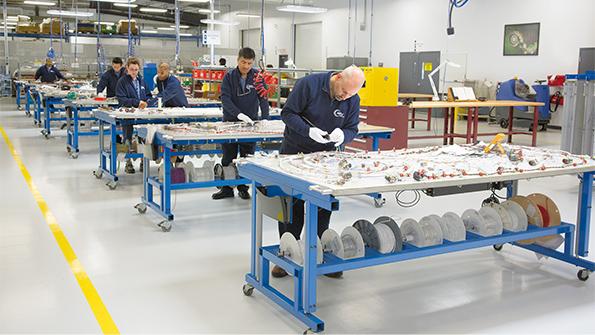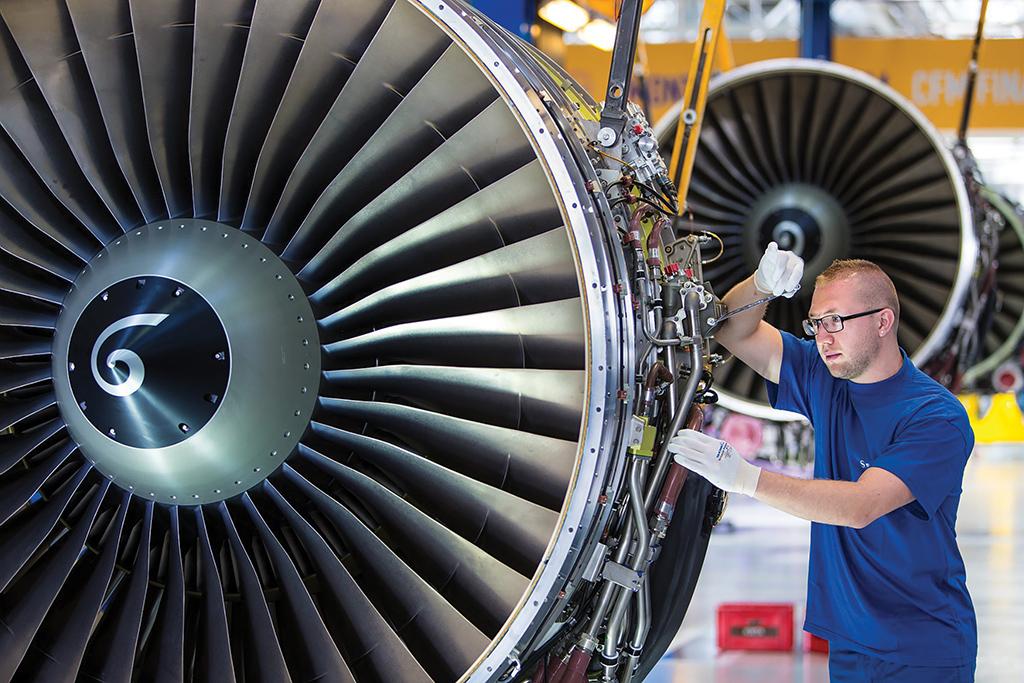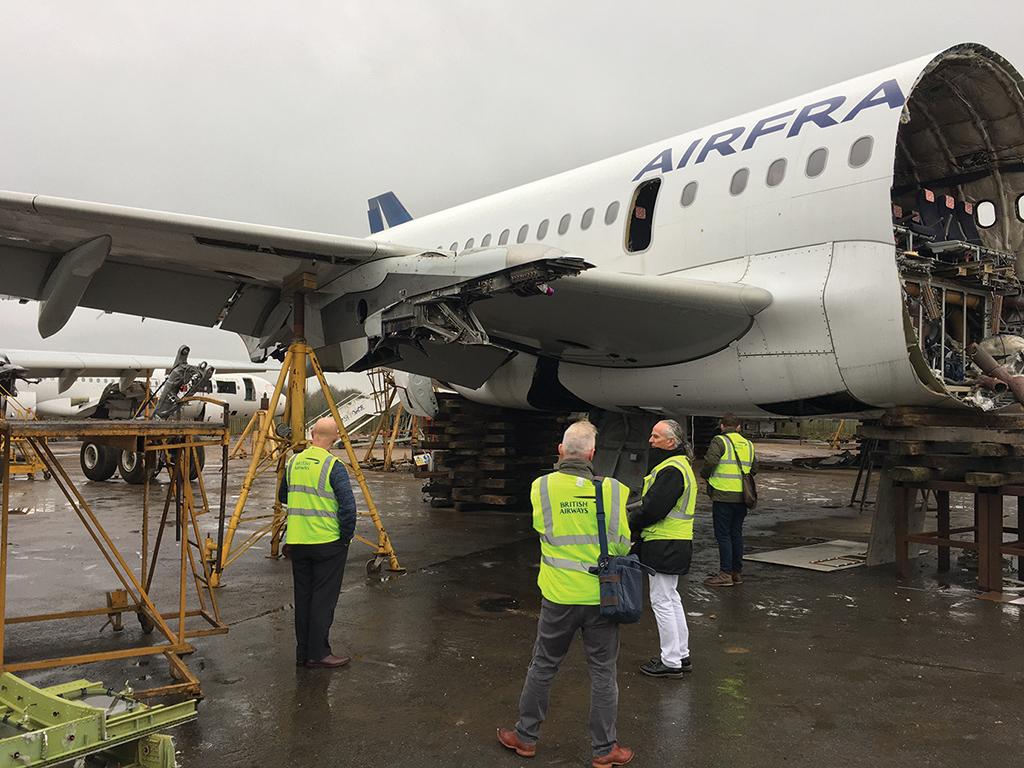
With the stage set for global airline recovery, can operators and MRO providers effectively source the components they need for flight operations and maintenance?
As commercial flying hours have picked up in most parts of the world, so has maintenance activity. Aircraft heavy checks and engine shop visits that have been deferred during the COVID-19 pandemic have become necessary, bringing with them demand for new parts, parts manufacturer approval, repairs and used serviceable material (USM).
This trend marks an abrupt market correction after the lean years early in the pandemic, when airlines and MRO providers let inventories dwindle. “There was a significant reduction in purchasing [in 2020-21],” observes Abdol Moabery, CEO of parts specialist and asset manager GA Telesis.
“Airlines did their utmost to protect cash outlay while doing what they could to maintain their fleet maintenance programs,” Moabery says. “As was the case prior to the pandemic, they looked at internal resources first. Some airlines cannibalized parts from stored aircraft to avoid the cost of purchasing replacement parts.”
Conventional parts procurement has returned, but aviation supply chains are struggling to keep up with the pace of recovery in the core passenger market.
“While airlines saw the ramp-up via advanced bookings, suppliers were not necessarily ready for the volume of replacement parts needed to support airlines at 2019 levels and in many cases beyond,” Moabery says.
Staffing remains a huge issue across the aftermarket, as companies that contracted in size battle to lure back skilled engineers and manufacturing personnel, some of whom retired or moved to other industries.
“The industry lost a lot of great talent . . . and perhaps ramping back up staffing-wise is the pacing item,” Moabery agrees. Access to raw materials is another issue due to wider geopolitical issues, such as the Russia-Ukraine war, affecting both pricing and availability.
Of course, sanctions on Russian airlines mean that the war has also affected demand for parts, although the country’s relatively small share of global traffic is having only a slight impact on the overall market. “While we saw a small reduction resulting from Russian sanctions, that has been made up by greater demand levels from others,” Moabery says.
Maintenance Boom
For parts providers that can negotiate supply chain bottlenecks, a lucrative market awaits. Maintenance activity is up across the board, with almost every major OEM reporting strong performance from their services businesses in the three months through June 30. On top of this, Moabery notes that many airlines let inventories shrink below minimum thresholds during the pandemic, resulting in a surge in demand for parts to support restored flight operations in addition to routine maintenance.
One example of the surging aftermarket for parts and maintenance is Boeing Global Services, which posted higher revenues and profits in the second quarter largely as a result, the OEM says, of more activity in commercial aircraft services. Operating earnings for the second quarter increased 37% year-over-year to $728 million, the highest of any division within the wider company—and comfortably the best margin of any Boeing division.
“Our services business . . . continues to benefit from growing commercial fleets and strong cargo markets, with several Boeing Converted Freighter and materials management agreements recently announced,” Boeing Chief Financial Officer Brian West said on a second-quarter earnings call.
Commercial aftermarket sales were also up, by 25%, at Collins Aerospace in the three months through June 30. The aerospace systems provider says this was driven by a 33% increase in parts and repair, a 20% increase in provisioning and an 8% increase in modification and upgrades.
Another beneficiary was Safran, which produces various airframe and engine parts and is half of the CFM alliance. The French OEM noted that while CFM56 shop visits in the first half of the year did not rise as much as anticipated, this was offset by heavier workscopes than expected, which the company attributed to third-party maintenance shops restocking their inventories after running them down to conserve cash during the pandemic. Safran said spare parts sales for the CFM56 and high-thrust engines were “up strongly” during the first half.
Another driver of new parts sales is inflation. Many MRO providers and airlines plan to buy stock ahead of the annual rise in catalog prices, which is expected to be higher than normal this year.
Asked on a second-quarter earnings call whether inflationary trends had influenced spare parts prebuying by Safran’s customers, CEO Olivier Andries agreed there had been an impact. “We will soon communicate on our catalog price increase that is planned for November. But you can expect it’s going to be up compared to what we have basically done in previous years considering inflation,” he added.
Andries also noted that it is easier for Safran to pass on inflationary costs to customers through time and materials contracts than through flight-hour-based support agreements. Currently, CFM’s support contracts are split roughly evenly between the two types, although Andries expects flight-hour-based deals eventually to comprise up to 70% of all maintenance contracts.

Used Versus New
In view of airlines’ fragile post-pandemic finances, they might be expected to prefer sourcing cheaper used parts over new ones, either directly or through their maintenance providers. An ample supply of USM also would be expected, given the opportunities for aircraft retirements and teardowns during the crisis years. Unfortunately for cost-conscious carriers, there is no simple switch from new to used parts.
“For those airlines that repair their own engines, and as these fleets mature, I’m sure most would prefer USM over OEM,” says Joseph Kuhn, CEO of Contrail Aviation Support, which focuses on parts and whole engines for the CFM56 and Pratt & Whitney V2500 market.
“The problem is that supply chain issues are affecting both,” Kuhn says. “Lead times for bringing USM to market are double what they were pre-COVID. Assuming the OEMs are experiencing the same, this makes for a very unpredictable supply chain and, hence, difficult planning for airline engine MROs.”
Some OEMs have feet in both the new and used parts markets. Honeywell, for instance, offers reconditioned Honey-well parts as well as third-party equipment via Honey-well Aerospace Trading.
Neil Hounjet, director of the business and general aviation Americas aftermarket at Honeywell Aerospace, points out that the company’s new parts output has been affected by recent industry-wide challenges. “There is obviously significant distress in global supply chains, and those impacts have been felt across the aerospace sector and well beyond,” he notes.
However, Hounjet also offers a telling analysis of why the USM market is struggling with supply, highlighting the surprisingly low number of aircraft teardowns. “We have not had significant aircraft teardowns, as had been anticipated or forecast,” he says. “Operators are continuing to operate older aircraft due to delays on deliveries of newer aircraft. Also, due to supply chain challenges, operators are staggering inputs into the shops. Cost pressures have resulted in continued time usage of the assets. We’ve also seen that lower aircraft value in conjunction with lower parking fees outweighs the need to tear down an aircraft.”
Moabery, however, predicts that any USM shortages will be short-lived. He notes that GA Telesis and some of its big competitors took advantage of the crisis to increase their inventories, anticipating that air travel would return. But he points out that refurbishing materials back to serviceable quality is proving to be another bottleneck.
“The area where we all will struggle is with the supply of subcomponents in our MRO services businesses,” Moabery says. “We are seeing three-month-plus delays in receiving the materials we need to repair components. However, looking forward, I see a very robust and efficient supply chain ahead, and there will be an abundance of USM material to support the airlines.”
Moabery attributes this largely to the “institutionalization” of the USM network. Big OEMs such as Honeywell now actively are participating in the market alongside significant investment from private equity funds. “That has given the airlines more confidence in the ability of the major USM suppliers to meet their long-term supply needs at levels equal to or greater than using new replacement parts,” he says.
“There has been a greater propensity globally to move toward using more USM content by airlines,” Moabery adds. “The USM suppliers have been plenty busy as a result, and the OEMs are making a greater effort to support in that manner, too.”

Repairs
When parts supply is under stress, airlines can turn to OEM and designated engineering representative repairs—and many are, according to Hounjet. “Repair demand is also approaching 2019 levels as flight hours continue to increase,” he adds.
However, as Moabery highlighted, this part of the aftermarket faces its own supply chain challenges.
Labor is another concern, Contrail’s Kuhn notes. “The demand for repairs is probably at an all-time high,” he says. “The repair shops, like the airlines, made significant reductions in their workforces due to COVID. And, like the airlines, they’re having a difficult time keeping up with demand that’s approaching pre-COVID levels.”
Looking ahead, Moabery predicts that MRO demand will normalize next year as the aftermarket catches up with airline operations. “[There will be] unprecedented demand levels for component repairs, especially engine components . . . [due to] a significant increase in the number of airplanes that will be permanently retired and dismantled,” he adds.


Comments